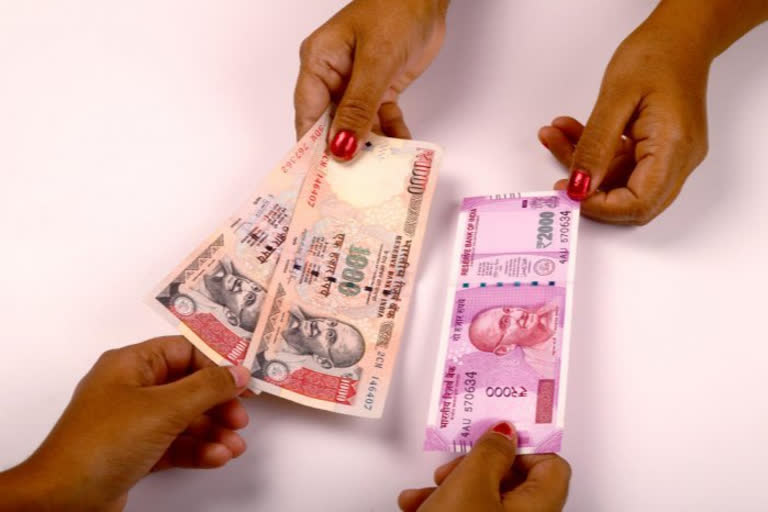Hyderabad: The word demonetisation conjures up bad memories as people stood in serpentine queues in front of banks to exchange the old currency with new ones while others were at ATMs for withdrawal of cash.
Due to a shortage of cash, weddings were postponed, medical treatment was curtailed and small businesses closed due to lack of working capital and their workers returned to their villages.
Prime Minister Narendra Modi announced the demonetisation of high-denomination currency notes on November 8, 2016. Prior to the demonetisation, the Prime Minister asserted that the demonetisation was aimed at rooting out black money, eliminating counterfeit currency, ending the financing of terrorism and setting the tone for a cashless economy.
The then Finance Minister Piyush Goyal told Parliament that Rs 1.3 lakh crore black money has been recovered with demonetisation. The government had expected that at least Rs 3-4 lakh crore black money will get extinguished outside the banking system due to the demonetisation exercise alone.
This was because of the misperception that ‘black means cash’. If cash was squeezed out, the black economy would vanish into thin air at one stroke. One had to bear short-term pain for long-term gain, the Prime Minister said and likened it to ‘ahuti’ in a ‘yagya’. If the pain does not end in 50 days, Modi said, the public could give him any punishment and he would accept it.
Also read: Demonetisation was attack on India's unorganized economy: Rahul Gandhi
Five years after the announcement of demonetisation, the currency with the people for the fortnight ended on October 29, 2021 stood around Rs 29.44 lakh crore from a level of Rs 17.97 lakh crore recorded on November 4, 2016.
The RBI's data sheds light on how the economy has managed to leapfrog in recent years despite fears of an economic collapse looming above the country in the last few years. The measures taken up by the government to push for digitisation of payments and discourage cash transactions did not yield results as cash transactions in the country continue rising steadily.
Similarly, the cash-to-GDP ratio of the country dropped from 12% as a result of demonetisation, but managed to climb back in the latter years. The real GDP growth was affected by the demonetisation. Growth had been slowing even before, but after demonetisation, the slide accelerated.
In 2016, the year when demonetisation was launched, 6.32 lakh counterfeit notes were seized across the country. A total of 8,34,947 fake Indian currency notes worth Rs 92 crore were seized in 2020 when compared to 2,87,404 notes worth Rs 25 crore in 2019. Of the notes seized, the highest amount was in Maharashtra (Rs 83.6 crore worth fake currency), followed by Uttar Pradesh (Rs 3.9 crore) and West Bengal (Rs 2.4 crore). The seizure of fake Indian currency notes in 2020 saw a 190.5 per cent rise from 2019, according to the data provided by the National Crime Records Bureau (NCRB).
Also read: After demonetisation, GST, floods hit Agra's footwear industry hard
With cash remaining the preferred mode of payment, currency with the public for the fortnight ended on October 8, 2021 stood at a record high of Rs 28.30 lakh crore- up 57.48 per cent, or Rs 10.33 lakh crore, from a level of Rs 17.97 lakh crore on November 4, 2016. Cash with the public has shot up to 211 per cent from Rs 9.11 lakh crore, recorded on November 25, 2016.
Digital payments have been increased from Rs 1,459.02 crore in 2017-18 to Rs 4,371.18 crore in 2020-21 due to sustained efforts towards digitalisation. According to RBI, 90 per cent of e-Commerce transactions use cash as a mode of payment in Tier IV cities and even in Tier I, the figure is as high as 50 per cent, underlining the fact that Indians are in no mood to give up cash for any other mode of payments.



